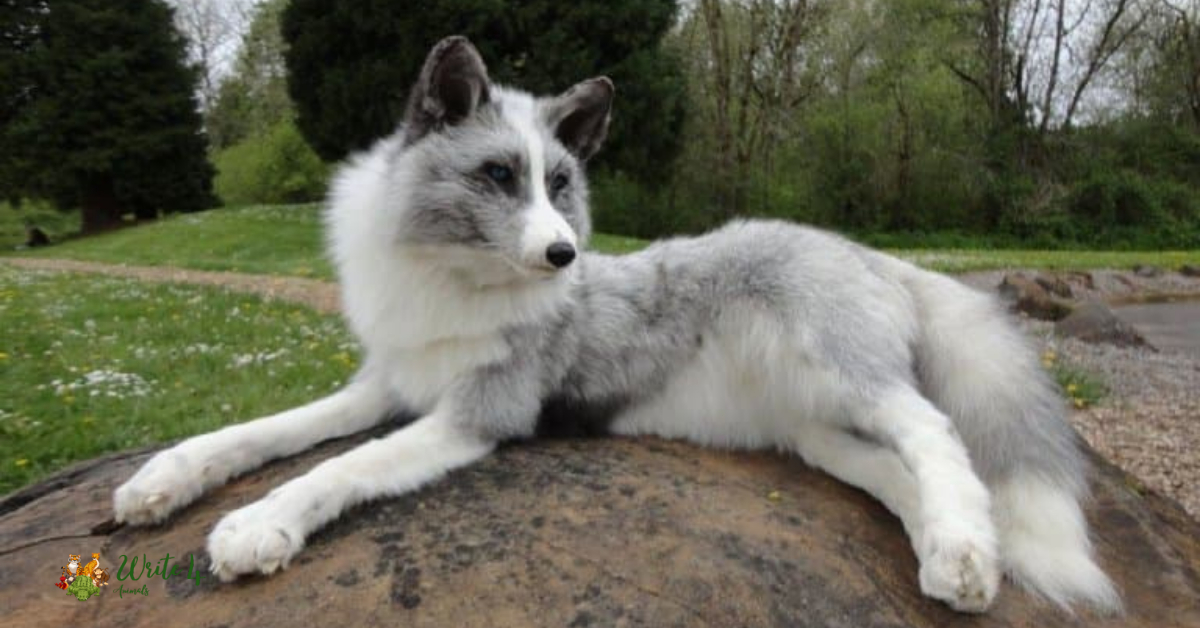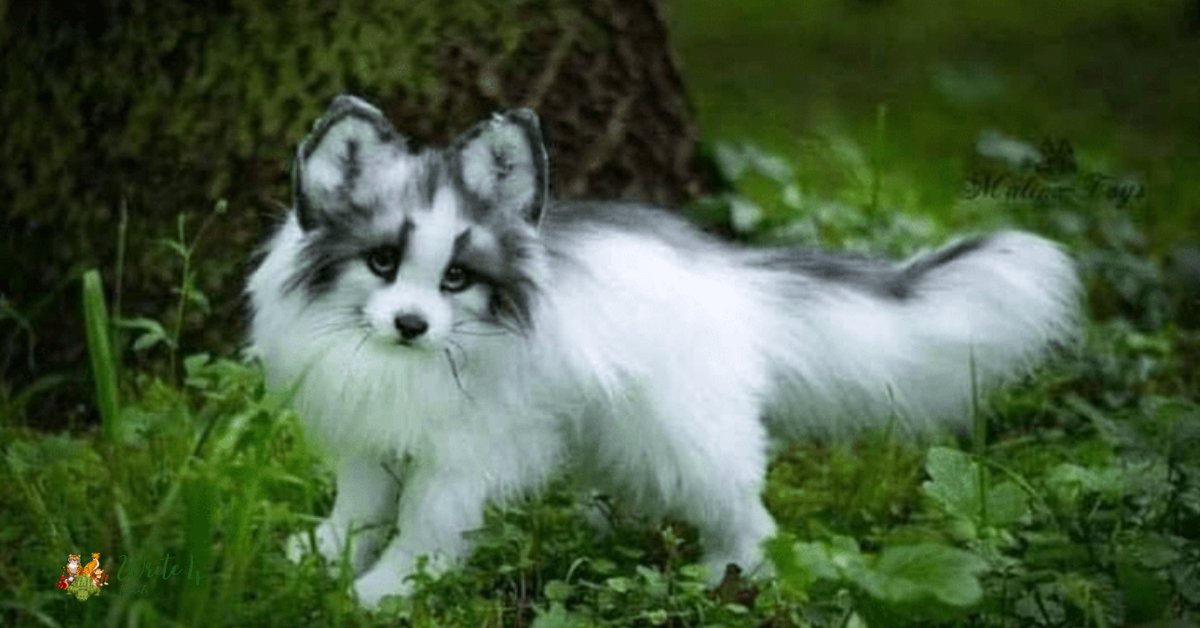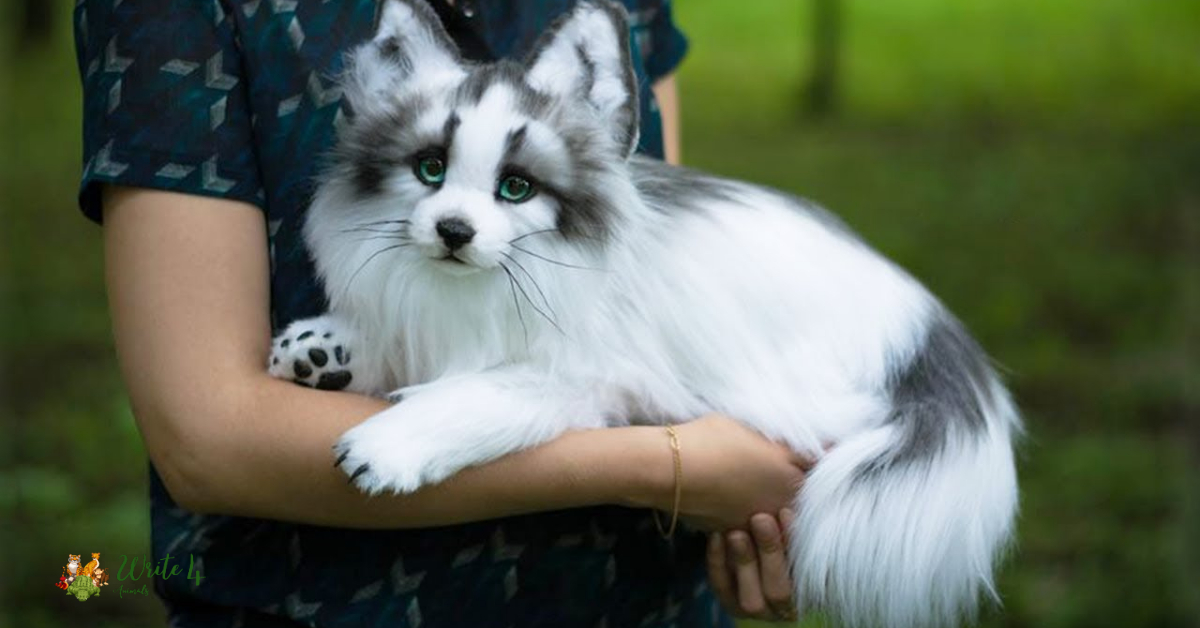The Canadian Marble Fox, often regarded as one of the most striking and enigmatic members of the fox family, has been capturing the fascination of wildlife enthusiasts and animal lovers worldwide.
With its distinct and mesmerizing appearance, this Arctic fox variant is a true testament to the wonders of nature. In this comprehensive blog post, we will delve deep into the world of the Canadian Marble Fox, exploring its origin, unique physical characteristics, behavior, habitat, conservation status, and more.
By the end of this article, you will have a comprehensive understanding of this captivating creature that roams the northern realms of Canada.
Canadian Marble Fox
Origin and Habitat
The Canadian Marble Fox, scientifically known as Vulpes vulpes gergovia, is a fascinating subspecies of the Arctic fox. Its origin can be traced to the frigid landscapes of northern Canada, particularly within the vast provinces of Nunavut, Manitoba, and the Northwest Territories.
These remote and harsh northern regions are where the Canadian Marble Fox has adapted and thrived for generations. Their habitat consists of Arctic tundra, characterized by sprawling snowy expanses, rocky outcrops, and sparse vegetation.
This stark and challenging environment has shaped the evolutionary traits of these foxes, allowing them to flourish in the face of extreme cold and scarce resources.
Physical Characteristics
The most conspicuous feature of the Canadian Marble Fox is its stunning coat coloration. Adorned with a blend of black, white, and gray fur, these foxes exhibit a marbled or piebald appearance, which not only captivates observers but also serves as effective camouflage against the snowy backdrop of their habitat.
In terms of size, they are relatively petite compared to some other fox species, measuring between 20 to 30 inches (50 to 76 centimeters) in length, excluding their bushy tail, which can add an additional 12 to 18 inches (30 to 45 centimeters). Their weight typically ranges from 6 to 10 pounds (2.7 to 4.5 kilograms).
Behavior and Social Structure
Canadian Marble Foxes are primarily solitary animals, leading lives of solitude in the harsh Arctic wilderness. They have adapted to a nocturnal lifestyle, being most active during the cover of night.
Their behavior is opportunistic in nature, as they are both hunters and scavengers. Their diet comprises small mammals like lemmings, voles, and birds, along with carrion. While they are generally solitary, during the breeding season, which usually spans from April to May, they may become more diurnal as they seek mates and raise their young.
In the vast, desolate landscapes of the Arctic tundra, these solitary creatures navigate their world with keen senses of sight and hearing, allowing them to detect prey and threats even beneath the snow.
Conservation Status
The Canadian Marble Fox, like its Arctic fox relatives, faces several conservation challenges, primarily driven by climate change and human activities. As global temperatures rise, the Arctic tundra, their home, is rapidly changing.
Shrinking ice cover and altered ecosystems are affecting the availability of their primary prey species, such as lemmings and voles. This poses a significant threat to their food source. Furthermore, as temperatures warm, their habitat is slowly receding, leaving these elusive creatures with less room to roam.
Though they face challenges, there are efforts underway to protect and conserve these remarkable foxes. Conservation programs are focused on understanding their behavior, monitoring their populations, and safeguarding their habitats. Climate change mitigation strategies also play a critical role in securing the future of the Canadian Marble Fox.
Mysteries and Myths
The Canadian Marble Fox has long been a subject of fascination, giving rise to mysteries and myths. Some indigenous Arctic communities have held deep cultural beliefs about these foxes, associating them with spirits or supernatural beings.
Their unique coat patterns have led to various folklore and legends among local populations. These myths reflect the deep connection between the indigenous people of the Arctic and the enigmatic creatures that inhabit their land.
For researchers and wildlife enthusiasts, the Canadian Marble Fox remains a subject of study and curiosity. Questions about their hunting strategies, mating habits, and precise adaptations to the Arctic environment continue to intrigue those who seek to unravel the mysteries of these elusive creatures.
Adaptations for Survival
The Canadian Marble Fox’s adaptations for survival in the harsh Arctic environment are a testament to the marvels of evolution. Their most obvious adaptation is their marbled coat, which provides both insulation against extreme cold and effective camouflage against the snowy landscape.
This fur serves as a vital tool for their survival, enabling them to blend seamlessly into their surroundings while staying warm in sub-zero temperatures. Their keen senses of sight and hearing are adaptations that help them locate prey beneath the snow and detect potential threats. Their bushy tails not only provide balance but also act as an extra layer of insulation during frigid winters. Their solitary nature and nocturnal behavior minimize encounters with predators, helping them navigate their challenging habitat with minimal risk.
Their keen senses of sight and hearing are adaptations that help them locate prey beneath the snow and detect potential threats. Their bushy tails not only provide balance but also act as an extra layer of insulation during frigid winters. Their solitary nature and nocturnal behavior minimize encounters with predators, helping them navigate their challenging habitat with minimal risk.
Reproduction and Offspring
The reproductive cycle of the Canadian Marble Fox is closely tied to the harsh Arctic seasons. Breeding typically occurs during the spring months, from April to May, when the temperatures become slightly more hospitable. During this period, male and female foxes engage in courtship behaviors, and pairs form for mating.
After a gestation period of about 50 to 60 days, female foxes give birth to a litter of pups, which usually consists of 4 to 9 offspring.The mother diligently cares for her young, providing warmth and nourishment in the form of her milk. The pups are born blind and helpless, but their eyes open after a few weeks, and they begin to explore their den.
As summer arrives and the Arctic landscape becomes more forgiving, the pups grow and develop, learning essential survival skills from their mother. By late summer or early autumn, the young foxes are ready to venture out on their own, marking the beginning of their solitary lives.
Role in Ecosystem
The Canadian Marble Fox plays a vital role in its Arctic ecosystem as both a predator and a scavenger. Its diet primarily consists of small mammals such as lemmings and voles, which helps control the populations of these rodents. This predation has a cascading effect on the entire ecosystem, influencing the abundance of other species.
Additionally, as scavengers, they help clean up carrion and play a role in nutrient recycling within their habitat. Their presence and hunting activities also provide a food source for larger predators like Arctic wolves and eagles.
By contributing to the balance of the Arctic food web, Canadian Marble Foxes have a direct impact on the health and stability of their ecosystem.
Human Interaction
Human interaction with Canadian Marble Foxes varies depending on the region and the activities of indigenous communities, scientists, and tourists. Indigenous Arctic communities have historically interacted with these foxes through cultural practices, such as hunting for their fur and incorporating them into folklore and traditions.
In recent times, scientific researchers have sought to study and monitor these foxes to better understand their behavior and role in the ecosystem. Their elusive nature and remote habitat make them a challenging subject for scientific observation.
Tourism, while limited in the Arctic, has also led to some human interaction with these foxes. Responsible wildlife tourism can offer opportunities for people to witness these captivating creatures in their natural habitat, but it must be carefully managed to minimize disturbance and protect the fragile Arctic environment.
Balancing human interactions with Canadian Marble Foxes is essential to ensure their conservation while respecting the cultural and scientific significance they hold in the Arctic regions they call home.
Video Credit – Dan’s Pet Care
Canadian Marble Fox in Captivity
The Canadian Marble Fox’s captivating appearance has made it a subject of interest for wildlife enthusiasts and conservationists alike.
While these foxes are primarily wild animals, some have been bred and raised in captivity for various purposes, including educational programs and fur farming. In captivity, they are usually kept in specialized facilities or sanctuaries designed to mimic their natural habitat. It is important to note that keeping any wild animal in captivity comes with significant ethical and legal considerations. Proper permits and adherence to animal welfare regulations are essential. Furthermore, efforts should focus on educating the public about these foxes and their conservation needs to foster a deeper understanding and appreciation for this species.
It is important to note that keeping any wild animal in captivity comes with significant ethical and legal considerations. Proper permits and adherence to animal welfare regulations are essential. Furthermore, efforts should focus on educating the public about these foxes and their conservation needs to foster a deeper understanding and appreciation for this species.
Tracking and Studying Marble Foxes
Tracking and studying Canadian Marble Foxes in their natural habitat is a challenging endeavor due to the remote and harsh conditions of the Arctic tundra.
Researchers employ various techniques to study these elusive creatures, including radio collars and camera traps. These methods allow scientists to gather data on their movements, behaviors, and population dynamics.
Studying these foxes provides valuable insights into their role in the ecosystem and helps inform conservation efforts. By understanding their behavior, researchers can assess the impact of environmental changes and human activities on their populations.
Threats and Challenges
Canadian Marble Foxes face a range of threats and challenges, primarily linked to climate change and human activities. Climate change is altering their Arctic habitat, affecting the availability of prey species and leading to habitat loss. This environmental shift can put additional stress on these foxes, especially during harsh winters.
Human activities, such as hunting and trapping, pose a threat to their populations. While hunting regulations exist to protect them, illegal hunting remains a concern. Additionally, habitat disturbance from industrial development in the Arctic can disrupt their habitats and food sources.
Conservation efforts are crucial to mitigate these threats and ensure the survival of the Canadian Marble Fox. These efforts include habitat protection, monitoring of populations, and education to raise awareness about the importance of preserving this unique and mesmerizing Arctic species.
Summary
The Canadian Marble Fox is a captivating and enigmatic subspecies of the Arctic fox that thrives in the frigid landscapes of northern Canada. With its marbled fur and unique adaptations, it plays a vital role in the Arctic ecosystem.
Reproducing during the spring, these foxes give birth to litters of pups, which they diligently care for until they are ready to venture into the challenging Arctic wilderness.
Human interaction with Canadian Marble Foxes varies, with indigenous communities historically hunting them for their fur and incorporating them into cultural practices. Scientific researchers study them to better understand their behavior and ecological role. Responsible wildlife tourism offers opportunities for people to observe them in their natural habitat.
Conservation efforts are essential to protect these foxes, as they face threats from climate change, habitat loss, hunting, and habitat disturbance due to human activities. Understanding the challenges they face and supporting conservation initiatives is crucial for their survival.
Frequently Asked Questions (FAQs)
[sc_fs_multi_faq headline-0=”h4″ question-0=”Canadian Marble Fox” answer-0=” No, Canadian Marble Foxes are a subspecies of the Arctic fox, known as Vulpes vulpes gergovia. They have distinct marbled fur but belong to the broader Arctic fox species. ” image-0=”” headline-1=”h4″ question-1=”What are the main threats to their survival?” answer-1=”The main threats to Canadian Marble Foxes include climate change, habitat loss, hunting, and habitat disturbance due to industrial development in the Arctic. ” image-1=”” headline-2=”h4″ question-2=”Can I adopt a Canadian Marble Fox as a pet?” answer-2=”Keeping a Canadian Marble Fox as a pet is generally discouraged and, in many regions, illegal due to their wild nature and specific habitat requirements. They are best appreciated in their natural environment or in educational facilities.” image-2=”” headline-3=”h4″ question-3=”How can I support marble fox conservation efforts?” answer-3=”You can support conservation efforts by contributing to organizations dedicated to Arctic wildlife conservation, promoting awareness, and advocating for responsible tourism and habitat protection. ” image-3=”” headline-4=”h4″ question-4=”Do marble foxes hibernate in the winter?” answer-4=”No, Canadian Marble Foxes do not hibernate. They remain active throughout the winter, relying on their thick fur and adaptations to survive in the cold Arctic environment.” image-4=”” count=”5″ html=”true” css_class=””]
Recommended
1. Everything you need to know about Baby Platypus
2. Discover the 12 Fish with Biggest Eyes
